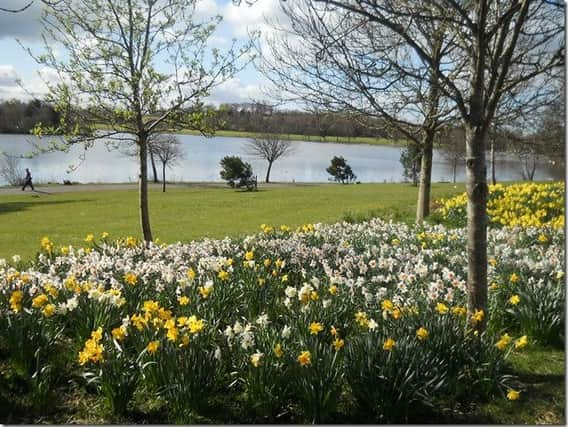Recycled plastic islands on Glasgow loch aimed at protecting birds


The special floating islands on Hogganfield loch, constructed out of recycled plastic, are designed to provide a place for the birds to nest and rear their young.
It is hoped the initiative, led by the Friends of Glasgow Local Nature Reserves, will help protect the birds for a generation.
Advertisement
Hide AdAdvertisement
Hide AdIf successful, the makeshift islands, which are planted with vegetation, could be replicated at other sites across the country.
Around four pairs of Great Crested Grebes, noted for their elaborate mating rituals, migrate to the loch in the city’s east end to breed each year.
However, heavy spring rain has destroyed their delicate floating nests and several chicks have died.
With the new islands in place, those behind the scheme believe the loch – a haven for birdwatchers – will again serve as a safe haven for the species.
Jim Coyle from the Friends of Hogganfield Local Nature Reserve, said: “Hogganfield loch is one of the best bird-watching sites in central Scotland. It attracted people from across the country and also from northern England.
“We are really hopeful that the bio-havens will prove attractive to a variety of nesting birds and will also be popular with people visiting the park. This could be the first time that Great Crested Grebes use bio-havens in Scotland and if successful, we hope this can be replicated elsewhere.
“We hope these islands last at least 25 years and help nesting birds produce many future generations.”
Great Crested Grebes perform elaborate courtship dances when wooing their partners and the males and females share the care of the chicks after they hatch.
Advertisement
Hide AdAdvertisement
Hide AdVigilant visitors to the loch might spot the grebes carrying their tiny, black and white striped chicks on their backs and bringing them small fish before they learn to dive for themselves.
Sadly, the birds were almost hunted to extinction in the UK by Victorians who prized their feathers for hats. In 1889, the birds’ plight inspired the creation of the Plumage League – the forerunner of the RSPB. Today, the UK population is gradually recovering.
The scheme is supported by Glasgow City Council, the RSPB and the Seven Lochs Project.